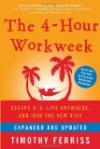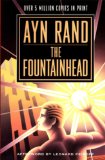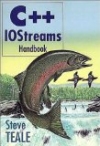Olivier Langlois's blog
Archives for: September 2008
09/12/08
AAC ADTS header buffer fullness field
I was trying to reconstruct ADTS headers from a raw AAC data stream and for most of header fields by knowing the stream properties, it is a straightforward task. There is, however, one exception. It is the ADTS 'Buffer fullness'. There is not much information about its purpose and how it is composed anywhere (including the Internet and the ISO IEC standards 13818-7 and ISO IEC 14496-3). After some analysis of the problem I came to the conclusion that 'buffer fullness' is not reconstructable reliably. However, doing this exercise has allowed me to get a better understanding of 'buffer fullness'. So for the next persons who will google 'AAC ADTS buffer fullness' in hope of finding some info, here is what I have learned:
Buffer fullness is a 11 bits field in the ADTS header. Its purpose is not very clear so I will expose what I know about it:
Definitions:
NCC = Number of Considered Channels. In our case 2
minimum Decoder input size = 6144*NCC = 12288
mean number of bits per block:
For a 96 kbps stereo signal at 44.1 kHz
(96000 bit/s / 44100 samples/s * 1024 samples/block) = 2229.1156 bits/block
maximum bit reservoir = minimum Decoder input size - mean number of bits per block
= (12288 bits - 2229.1156) = 10058
bit_reservoir_state[frame] = bit_reservoir_state[frame-1]+mean_framelength-framelength[frame]
0<=bit_reservoir_state[frame]<=max_bit_reservoir
adts_buffer_fullness=bit_reservoir_state/(NCC*32) (In other words, the state is shifted to the right to drop the 6 LSBs)
The purpose of the bit_reservoir_state is to control the encoder bitrate. The reservoir value gets lower as the encoder outputs frames longer than the mean framelength. Once the reservoir value gets near to 0, this will force the encoder to send few frames shorter than the mean framelength to refill the bit reservoir. If the encoder has prepared a frame and it is too long to respect the bit reservoir constraint it will perform a second pass on it to compress it further. If it is too short, it will add padding to it (with an AAC raw data block fill element type (FIL)) . The consequence of this is that on average each AAC frame will have the same length and the bitrate will be constant.
One observation is that the bit reservoir state is internal to the encoder and you cannot deduce it from the buffer fullness because you do not have the 6 missing LSBs of the state from buffer fullness.
Also the standard ISO IEC 13818-7 and ISO IEC 14496-3 are not clear about what a decoder can do with the buffer fullness. The open source faad decoder ignores it. The open source faac always set it to VBR (all ones) even if it has been configured to do constant bitrate. WinAmp AAC decoder uses it to display the stream bitrate. If the special value reserved for VBR is used, the displayed bitrate will vary, otherwise it will display a constant value (ie 96kbps) no matter what value it is. It could be a constant arbitrary value (ie:0), random or the values from a true encoder, it does not matter to this decoder.
I guess that a decoder could use the buffer fullness to predict approximately the frame length it risks to encounter down the stream but I have never seen a decoder using it.
09/02/08
C++ IOStreams Handbook
This book has been published in 1993 and iostreams has changed a lot since then so this book is a bit outdated. Things that were not there in 1993 include:
- extension less header files
- std namespace
- IO stream classes were not templates
- No locale and facet classes
- classes that are now deprecated strstream
Surprisingly even with all these changes, most of the code in the book would still compile today. This is one sign that C++ designers took a great care to not break existing code unless absolutely necessary. The book is divided into different chapters. Materials that have still value today are:
- The first 3 chapters that explain why a programmer should prefer using io streams over printf
- The next few chapters describing the translator classes (istream,ostream,etc)
- Even if the code is rather cryptic in my opinion, there is a chapter that shows how to write table based extractor and inserter functions (operator<< and operator>>). One application of such function, for instance would be to implement a regular expression processor with a DFA.
There are easier ways to implement regular expressions with the boost library. The value that I see in the third point is that I have always kept my own operators << and >> very simple and I have found this part of the book was eye opening to what was possible to do with these functions.
The chapter that I have found to have failed the test of time is the last and very lengthy chapter that presents close to 50 small test programs so you could test that your iostream implementation was compliant with the latest C++ draft specifications for iostreams. At the publishing time, it was perhaps needed as C++ implementations were trying to catch up with a moving standard but today, iostreams specifications have been stable for many years. I think that it is safe to take for granted that your iostreams behavior is compliant with the standard or it should be a total shame for the library developer if it is not the case.
To conclude, since the book is still accurate on most points, it can still be handy as a reference if it is hanging around. However, at the same time, since iostreams have changed in subtle ways since the publishing date, I would recommend looking for a more recent book for a new purchase. I have not read it but 'Standard C++ IOStreams and Locales' might be a better choice.
Olivier Langlois's blog
I want you to find in this blog informations about C++ programming that I had a hard time to find in the first place on the web.
| Sun | Mon | Tue | Wed | Thu | Fri | Sat |
|---|---|---|---|---|---|---|
| << < | Current | > >> | ||||
| 1 | 2 | 3 | 4 | 5 | 6 | |
| 7 | 8 | 9 | 10 | 11 | 12 | 13 |
| 14 | 15 | 16 | 17 | 18 | 19 | 20 |
| 21 | 22 | 23 | 24 | 25 | 26 | 27 |
| 28 | 29 | 30 | ||||
Search

Categories
Olivier Langlois's blog
- AAC (2)
- Book reviews (12)
- C++ (24)
- Code Optimization (4)
- Compiler (3)
- Fractal (2)
- Linux/UNIX (3)
- Multithreading (3)
- Software security (7)
- TCP/IP (8)
- Web (1)
- Windows programming (19)
- C++ (28)
- tutorials (4)
- General (10)
- Hardware reviews (2)
- Linux (12)
- Recommended books (4)
- C++ (20)
- Code Optimization (2)
- Compiler (3)
- Fractal (2)
- Linux/UNIX (1)
- Multithreading (2)
- Rare out of print (3)
- Software security (5)
- TCP/IP (7)
- Windows programming (16)
- Software reviews (0)
- TCP/IP (8)
- Video games (4)
Archives
- January 2016 (1)
- September 2015 (1)
- July 2015 (1)
- June 2015 (1)
- May 2015 (1)
- December 2013 (3)
- September 2013 (1)
- May 2013 (8)
- April 2013 (1)
- December 2010 (1)
- August 2010 (1)
- June 2010 (1)
- More...
Misc
 XML Feeds
XML Feeds
What is RSS?
Who's Online?
- Guest Users: 3
 BOOKS i'm reading
BOOKS i'm reading




